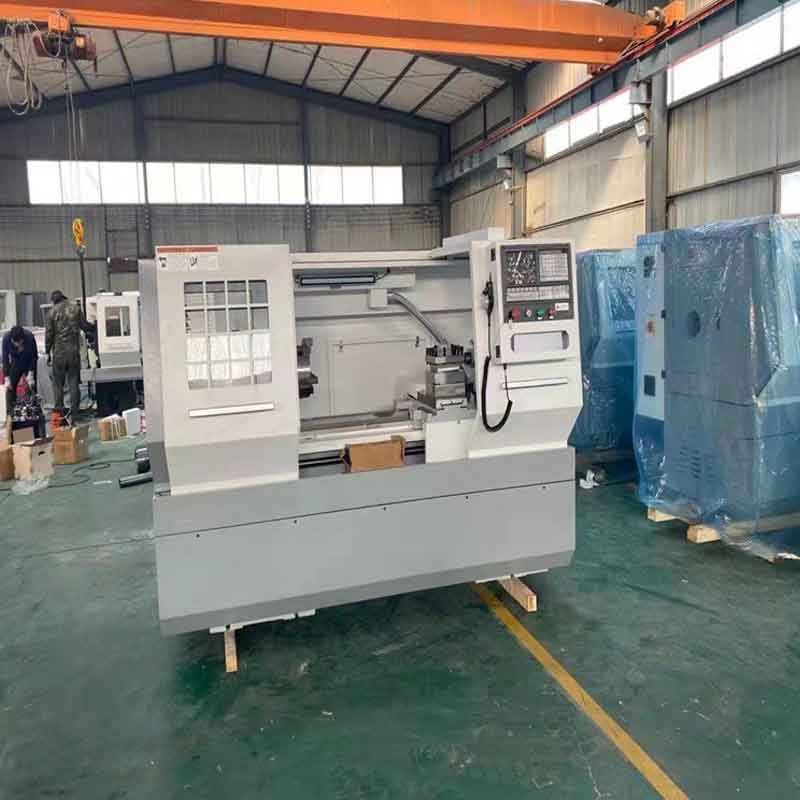Which CNC lathe chuck or spring collet is accurate? There are several factors to consider when making a decision about which clamp will perform better. When deciding between a spring quiver or a jaw chuck for a given CNC lathe job, all of the following factors need to be considered.
1.CNC spindle load capacity
The maximum allowable weight of a CNC lathe spindle is based on the bearing load capacity. If the weight of the chuck and workpiece combination is too large, the bearings may be overloaded. For those machining tasks where the danger beyond the limit is present, this risk may determine the choice of workpiece fixture. The jaw chuck is often heavier than the equivalent spring quiver. Therefore, in situations where weight control is required, the spring arrow Canister is the appropriate choice.

2. CNC spindle speed
Spring quivers tend to be a better choice when turning at very high spindle speeds for two main reasons:
One reason has to do with the quality of the chuck. Assuming that the jaw chuck and spring quiver are driven with the same spindle horsepower, a thicker jaw chuck will take longer to accelerate to the required speed, and the longer the acceleration time will be. work cycle, reducing productivity.
Another reason is related to the centrifugal force, because it increases with the square value of rpm, so in the case of high-speed cutting, this value is important. For example, doubling the spindle speed will quadruple the centrifugal force. This force pulls the chuck jaws away from center, tending to reduce clamping force. But with a spring quiver, centrifugal force will not have a significant impact. As a result, the clamping force is more stable over the entire processing speed range.
3. Sub-spindle situation
Turning machines equipped with subspindles are often used for a variety of high-volume operations, and spring quivers can provide significant machining time savings in these applications. They can process all sides of a part in one work cycle. These machines are often combined with bar feeders to enable unattended production and continuous processing of workpieces. In these applications, the chuck drive time saved may be small for one workpiece, but over the entire production process, the time saved per workpiece multiplied by the number of workpieces processed adds up to Very impressive.
4. Workpiece size and scope
Spring quivers are ideal for workpieces less than 3 inches in diameter. The spring quiver limits the length of the workpiece. In particular, the spring quiver limits the axial (Z-axis) travel range of the machine tool because its length is longer than the jaw chuck. When the processing length of the workpiece requires almost the entire available stroke of the machine tool, a jaw chuck is probably used.
Part of the reason why a spring quiver opens and closes faster is because of its shorter drive stroke, which allows it to work with a more limited range of workpiece sizes than a jaw chuck.
In fact, the speed of the spring quiver is elastic, and if the workpiece size is consistent, the speed of the spring quiver will be faster. If the workpiece size varies greatly, a jaw chuck may be required to accommodate the wide range of workpiece sizes being processed.
5. Processing operations
The spring quiver applies clamping force around the entire circumference of the part, rather than just in selected contact areas. This results in good concentricity, which is especially important for secondary machining projects where considerations need to be made with Accuracy related to primary machining, because the spring quiver's accurate clamping ability is strong, even when the jaw chuck is used for primary machining, the spring quiver can also be used for secondary machining. Chucks with hollow soft jaws can achieve TIR (Total Reading) repeatability in the 0.0006 to 0.0012 inch range, while spring quivers have a typical repeat accuracy of 0.0005 inch TIR or better. To further improve secondary machining accuracy, The concentricity of the spring quiver can also be adjusted during installation.
6. Processing batch size
Spring quivers are suitable for both large and small batch processing tasks.
In the processing of small batches and multiple tasks, the advantage of the spring quiver is related to the product changeover time. The jaw change of the standard jaw chuck takes about 15 to 20 minutes, and the jaw chuck dedicated to quick change takes 1 minute. , and the quick-change spring quiver's chuck replacement only takes 15 to 20 seconds. When products are frequently changed, the accumulated time saved is considerable.
When machining large batches, the time savings associated with clamping can be accumulated equally. The spring quiver requires less time to open and close than the jaw chuck, by reducing the non-cutting time of changing from one workpiece to the next. , reduce processing cycle time.
7. Material type
For hot rolled steel, forgings and molded parts, standard jaw chucks tend to work better because all such parts have inherent diameter variations. On the other hand, cold-rolled material parts tend to have better dimensional consistency and, therefore, are suitable for spring quivers. However, the lack of consistent diameter measurements does not necessarily constitute a barrier to the adoption of spring quivers, and chucks designed for non-circular cross-sections are available for holding molded bar stock formed into the customer's desired shape.
When one is choosing between a jaw chuck and a spring quiver for the most suitable workholding device, it is also important to consider the third option. Where possible, keeping both clamps and changing from one to the other may be the most cost-effective solution. Changing from jaw chuck to spring quiver, or vice versa, usually takes no more than 20 minutes. The jaw chuck can be retained on the machine tool to handle situations where the scope of the part is uncertain. However, when the machine tool processes a large number of workpieces, or several batches of parts with the same size, the productivity increase obtained by using the spring quiver greatly exceeds the productivity loss caused by the time spent changing fixtures.



